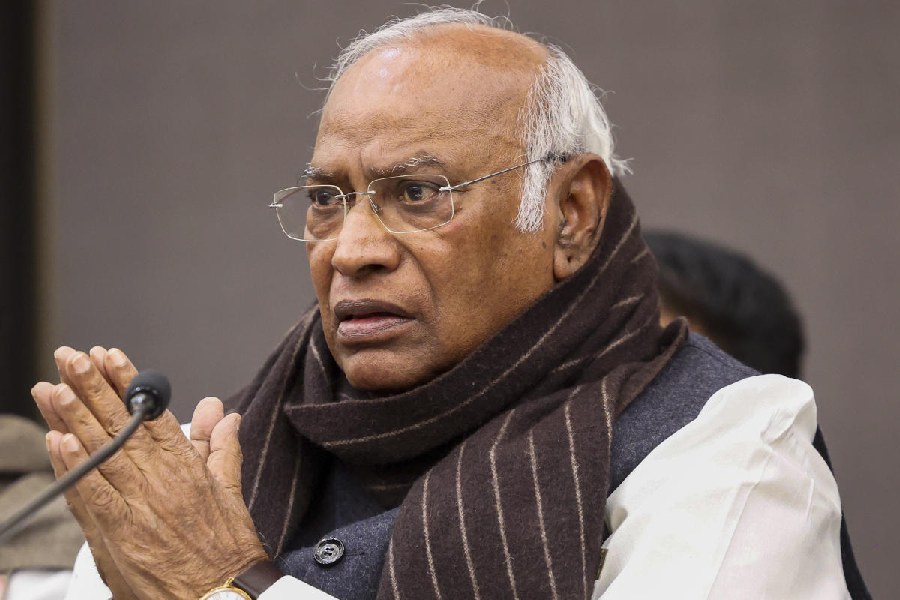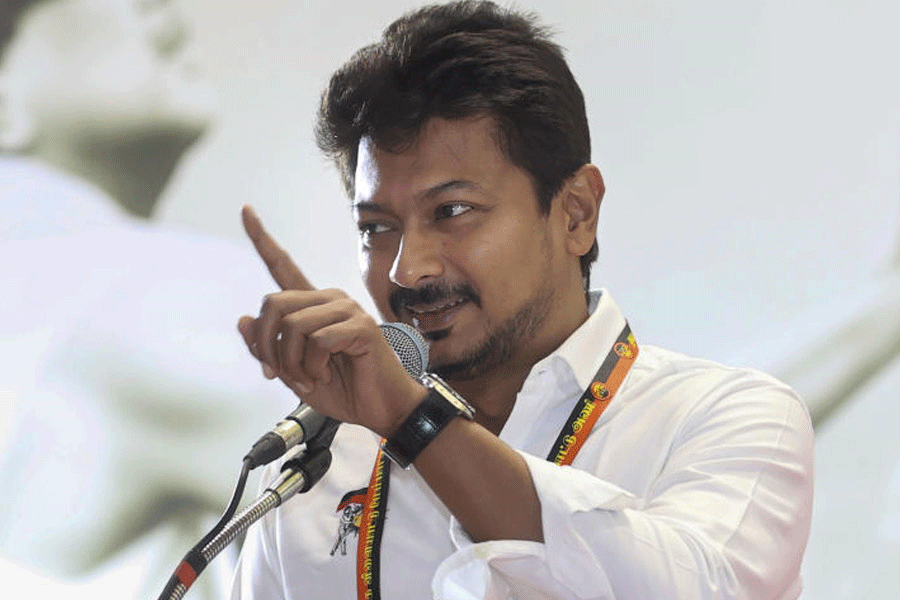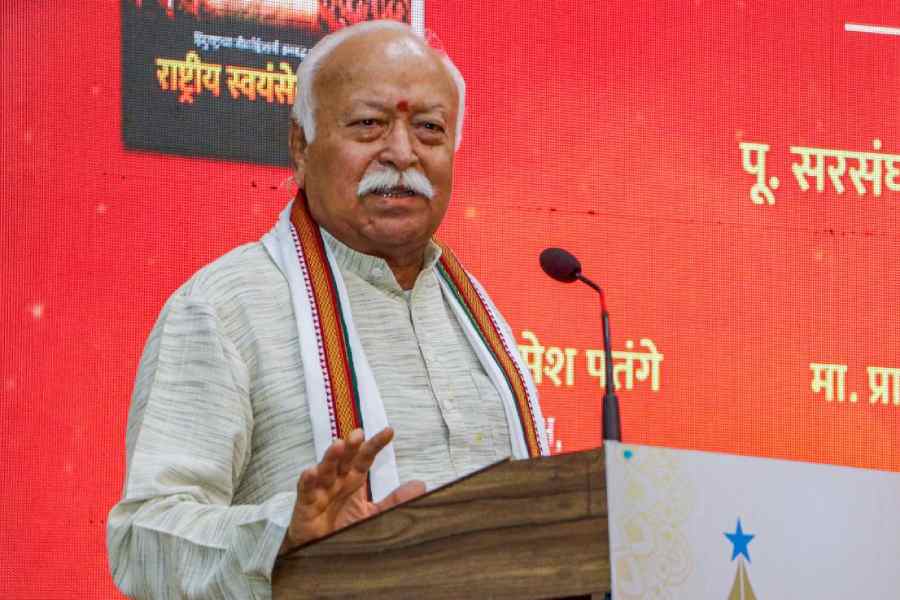
Manish Mundra could be living out the script of one of his films. Hardly anyone, till a year ago, had heard of the businessman who had made his millions as the managing director of a petrochemical company in Nigeria. Now, he’s about to achieve the great movie industry dream and walk the red carpet at Cannes. Masaan, the Neeraj Ghaywan film for which he is the lead producer with Anurag Kashyap, will premiere in the Un Certain Regard section there tomorrow.
Mundra has already made his name as one of the new faces of independent cinema ever since he made a dramatic offer to fund Rajat Kapoor’s Ankhon Dekhi — it happened over a legendary Twitter exchange. He’s been on a roll ever since, producing films like Prashant Nair’s Umrika and Nagesh Kukunoor’s Dhanak, which just won awards at Sundance and Berlin, respectively. Now, he’s pushing his dream further with his production house, Drishyam Films, and also by sponsoring the Drishyam Sundance Institute Screenwriters Lab with an outlay of around Rs 1.25 crore a year.
.jpg)
(in picture) and Ajay G. Rai turned
producers with Liar’s Dice in 2012 and
they have followed it up with the
award-winning Killa
Photo: Gajanan Dudhalkar
“I don’t think of movies as a business. It’s more about passion and having fun. And as long as it’s that way, we can create and support good cinema which is loved by all,” says Mundra, who hit the headlines when he saved the Mumbai Film Festival with a Rs 50-lakh grant last year.
Mundra isn’t the only producer who’s ready to back ‘good cinema’. The indie film space in India has blossomed over the last decade with new directors emerging and players like NFDC and, the big daddy of indie films, Anurag Kashyap, nurturing new talent, producing films and marketing them internationally. Now a host of other New Age producers have emerged who are putting their money behind their convictions to make what Cannes Film Festival director Thierry Fremaux calls “a new Indian wave” of films that’s “not Bollywood and not Bengali but a third type” that shed light on “some really powerful things about the contemporary society in India”.
Cut to Jar Pictures in Versova’s Aram Nagar, the heart of Mumbai’s film world. Here, Alan McAlex and Ajay G. Rai are celebrating the National Award for Avinash Arun’s Killa. The delightful film became the first Indian film to win a Crystal Bear at the Berlinale in February. Now, they’re awaiting its release in June.
McAlex and Rai are veteran line producers who’ve worked on everything from indie films like Harud to the mainstream Thank You. They formed Jar Pictures in 2008 to offer line production services, which is still their mainstay. But they turned producers in 2012 with Geetu Mohandas’s art house Liar’s Dice.
“At that time, we were only thinking of producing the films we liked. There was no business sense,” says McAlex, who was a cinematographer before becoming line producer in 2005. “We want to make good films that can also run commercially,” adds Rai, who was production head at UTV earlier.
The new producers who’re living out their silver screen dreams are coming from all spheres of life — and with all sorts of ambitions. So investment banker Vivek Rangachari set up DAR Motion Pictures in 2009 as part of DAR Capital Group headed by his brother, Arun, in Dubai.
.jpg)
.jpg)
An MBA from Insead, Rangachari had worked in the Middle East before moving to Mumbai after DAR raised a proprietory fund of around $50 million in 2006, which invested in the media space. “In 2009, we decided to plunge into content because we always had a passion for films,” he says.
He’s grown DAR Motion Pictures as a “mini-studio”. “Our aim is to push the envelope and develop new audiences while making commercially viable cinema,” he says. DAR has produced 13 films, starting from Mahesh Manjrekar’s Lalbaugh Parel to Haunted, Mickey Virus and D-Day to co-productions with Kashyap like The Lunchbox, Peddlers and Ugly.

Now, a producer’s role isn’t just Mr Moneybags. Rather, it entails everything from developing a script to bringing together the director and cast to raising finances, executing the film and ensuring its release.
Take actor-producer Vivek Gomber, who ensured that Chaitanya Tamhane’s multilingual masterpiece, Court, a satire on the lower courts, saw the light of day. Court, which got the National Award for Best Film, has gathered international acclaim ever since it won the Lion of the Future and the Orizzonti Award for Best Film at Venice in September 2014.
Gomber, who grew up in Singapore and studied acting in Boston before moving to Mumbai in 2004, put his faith in Tamhane’s idea in 2011. He first paid him a monthly salary of Rs 15,000 for a year to develop the script, and then staked his savings to produce Court. Tamhane had directed him in his play Grey Elephants in Denmark in 2009. “Chaitanya is incredibly talented. I have an insane amount of faith in him,” says Gomber, who plays the defence counsel in Court. Now, he’s released the film theatrically on his own, no mean feat for an indie film.
.jpg)
Photo: Gajanan Dudhalkar
.jpg)
.jpg)
Meanwhile, real estate entrepreneur-turned-actor Sohum Shah came to Mumbai from Sri Ganganagar to act. He got the stockbroker’s role in Anand Gandhi’s acclaimed Ship of Theseus but when the film was stalled for funds, he turned producer, setting up Recyclewala Films with Gandhi.
Now, they’re busy shooting Tumbad, a period horror-fantasy directed by Rahi Barwe. “Tumbad has everything, horror, fantasy, drama, emotion. It’s very different from Ship of Theseus, but, as a producer, I want to make different films that tell new stories in new ways,” says Shah.
All the new producers want to make intelligent films that are also viable. Take Mundra. Growing up in small-town Deogarh in Jharkand, Mundra, 42, always dreamt of making movies. “I felt cinema is a lovely way to express your viewpoint on life and society,” he says.
.jpg)
of Theseus but turned producer
when the film ran into a funds crunch
Still, he knew that “I had to empower myself financially” first. So, he spent the next 20 years rising up the corporate ladder. By 2012, he was ready. “I was looking for an entry point, which I got through Twitter,” he says.
Now, he has heady plans for Drish-yam. He’s laid the groundwork with the script lab. “Earlier, I was lucky to get films like Dhanak and Masaan. Now we’ve set up a platform from which we can generate good films,” he says.
He’s drawn to “grounded” stories on human relationships. “Glamour is superficial, it doesn’t attract me. I think good work has longevity. I’ve positioned myself as somebody who believes in content-driven cinema,” he says.
Drishyam will make three-four films a year. Coming up are Anu Menon’s Waiting with Naseeruddin Shah and X-The Film with 11 directors. “By March 2016, we will have another three-four films ready,” he says.
Meanwhile, at DAR, every year, Rangachari will invest some Rs 25 crore to produce six films. These will include films that can appeal to “a non-diasporic market” like Ritesh Batra’s The Lunchbox, mainstream fare like D-Day and regional films. Notably, The Lunchbox has grossed around Rs 165 crore globally. “It’s an outlier. But it’s the start of a trend,” he says.
Now, he’s producing Batra’s next film. Plus, he’s bullish on genres like horror and youth-centric films. So there’s Haunted 2 and also Bejoy Nambiar’s Fattack with gully cricket as a backdrop. And there’s a commercial film based on Farrukh Dhondy’s The Bikini Murders on Charles Sobhraj.
The producers know it’s a mean task making indie films. For instance, when McAlex and Rai began Liar’s Dice, they only had enough to cover its Rs 30-lakh production cost. And they worked hard as line producers to complete the Rs 1.2-crore film. But it was acclaimed at Sundance, and McAlex says, “We got so much more.” For Killa, they got a domestic investor. And they’ve even recovered the cost after selling its distribution rights. But they’re only producing without putting their own money now.
.jpg)
Similarly, Gomber staked his savings on Court. He took four years and nearly Rs 5 crore to produce and release it. “We didn’t know what would happen with the film. But we were not going to compromise,” says Gomber.
Naturally, he faced several challenges. For instance, he expected to get co-producers to part-fund the film but that didn’t materialise. Then, there were the rejections from film festivals till Venice changed their fortunes. Now, Court has sold in international markets and Gomber expects to recover his Rs 3.5 crore production cost in two years but largely because of Court’s prize money.
.jpg)
Indeed, it’s difficult to release indie films and make money on them. Hence, the producers are looking at co-productions, and also at international markets. Rangachari and Mundra want to make films that can travel abroad. And McAlex is working on international co-productions with films like Winter by Aamir ‘Harud’ Bashir.
.jpg)
They’re all pushing for theatrical releases too. “We don’t want to do films just to take to festivals,” says Rangachari. He will release his co-productions with Kashyap, Monsoon Shootout, Peddlers and Haraamkhor, this year. Jar too will release two films this year, Gurgaon by Shankar Raman, and Nil Batte Sannata by a new director.
Similarly, Mundra plans to release Masaan in June followed by Dhanak. He’s bullish on the indie space. “If you focus on content-driven cinema and consistently make good films, people will come and watch your movies. And the commercial aspect will get sorted eventually,” he says.











